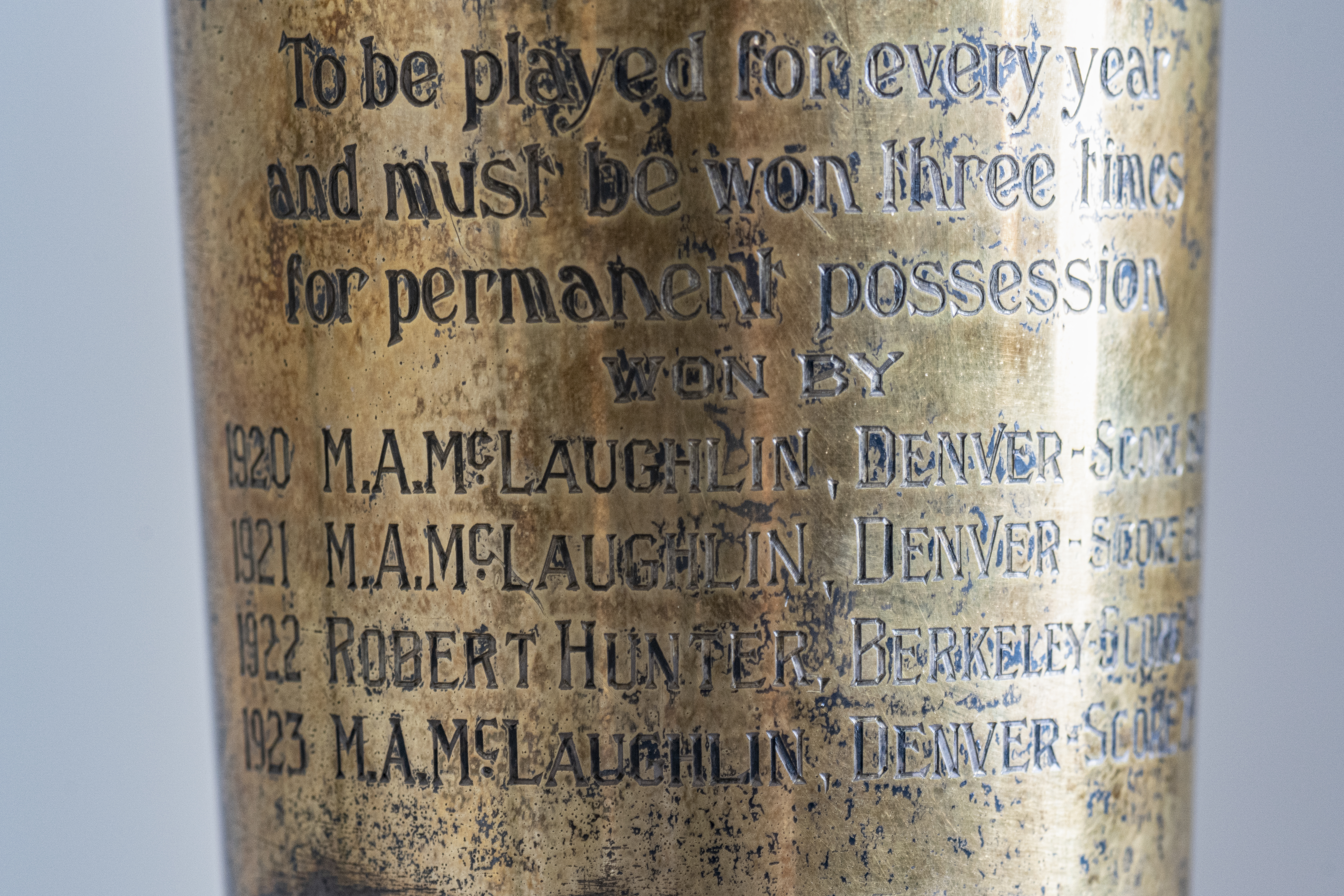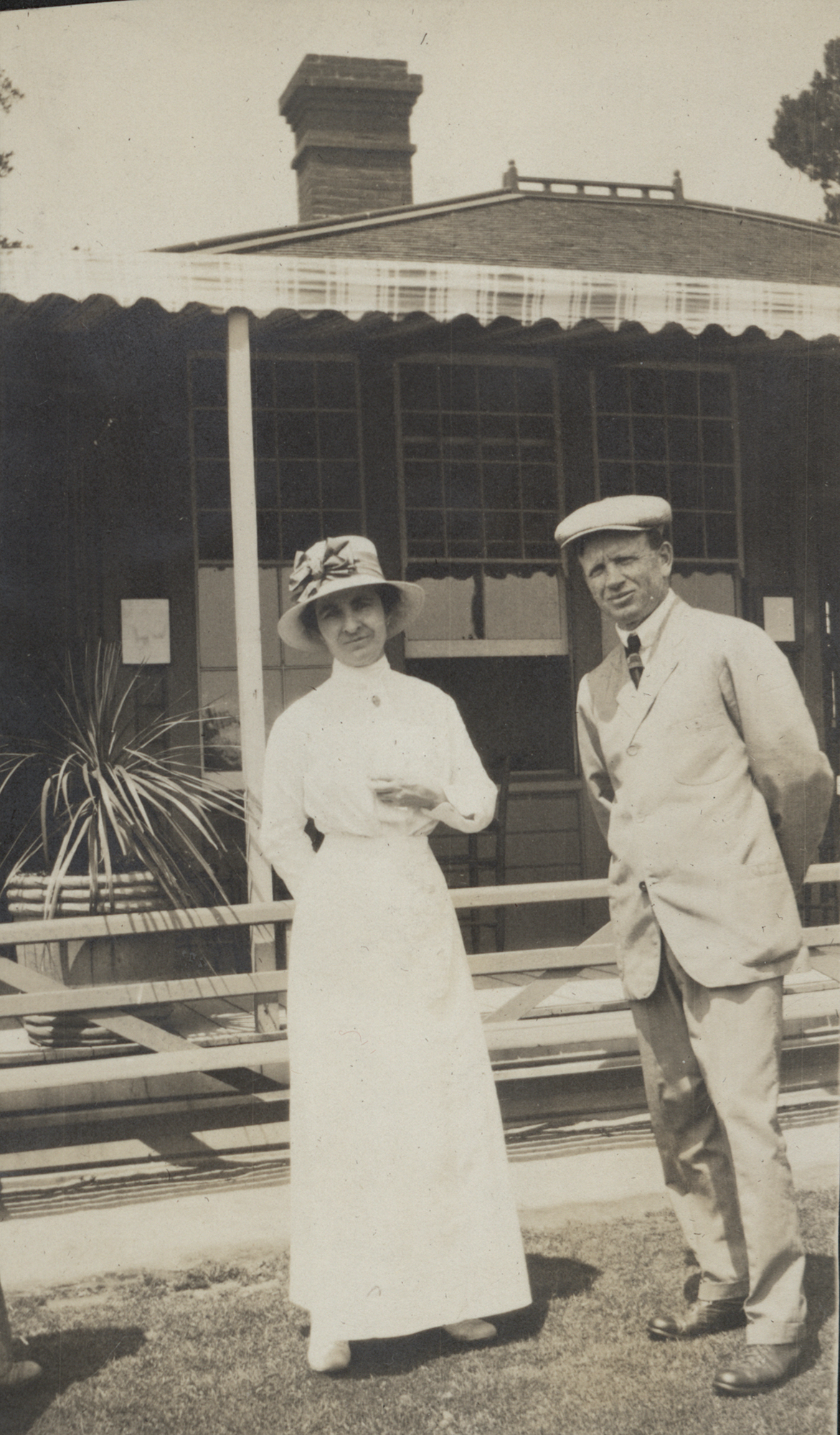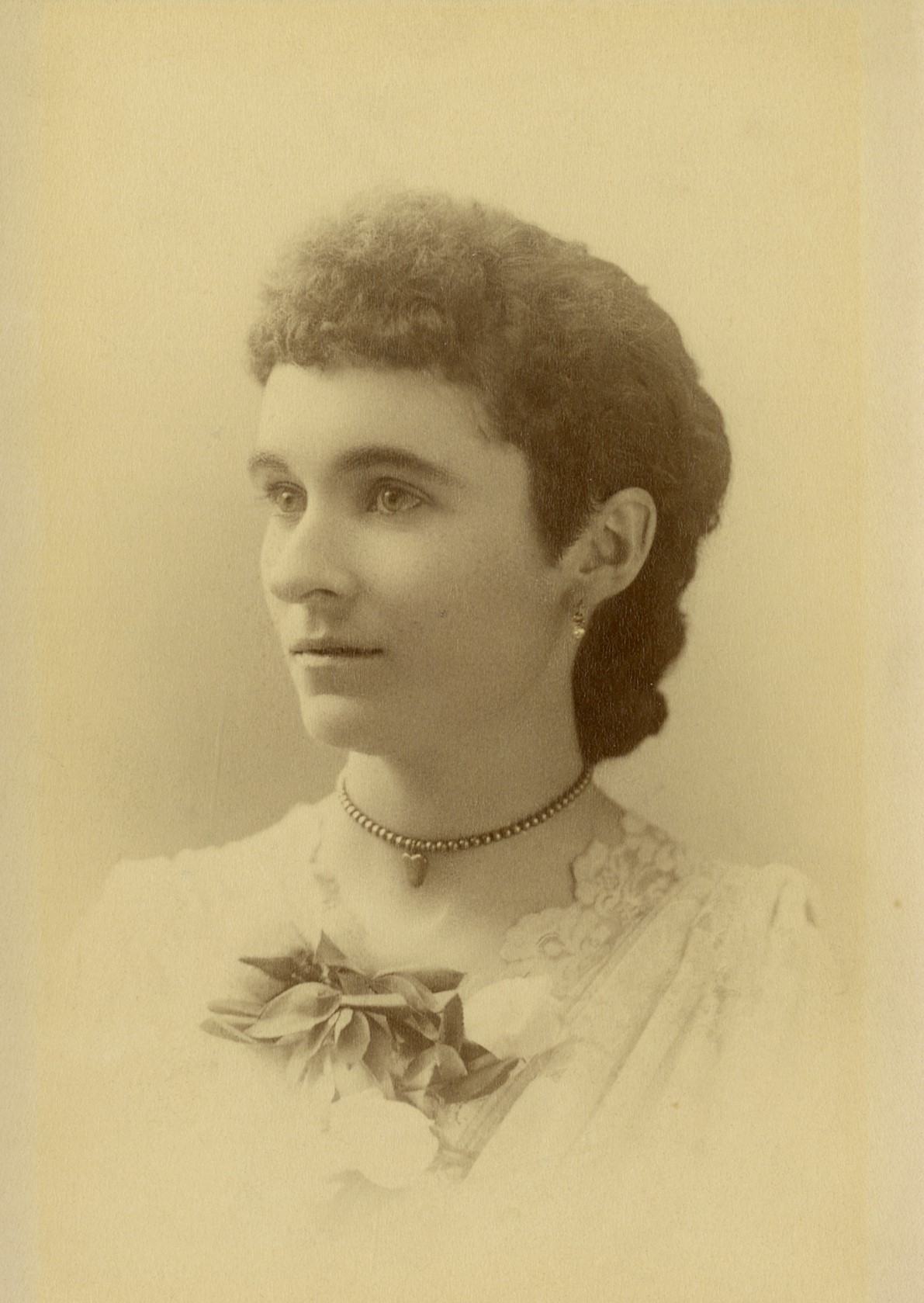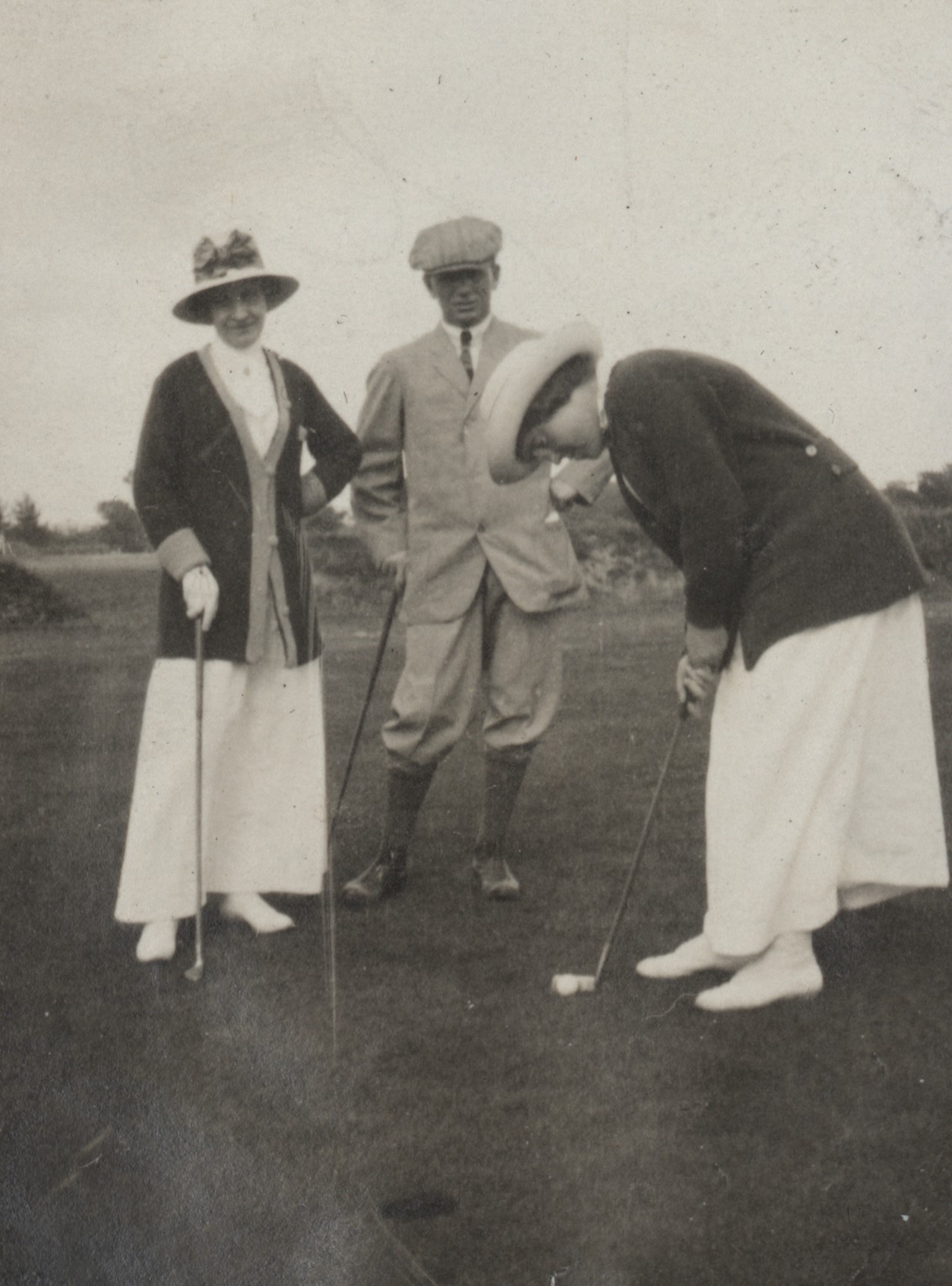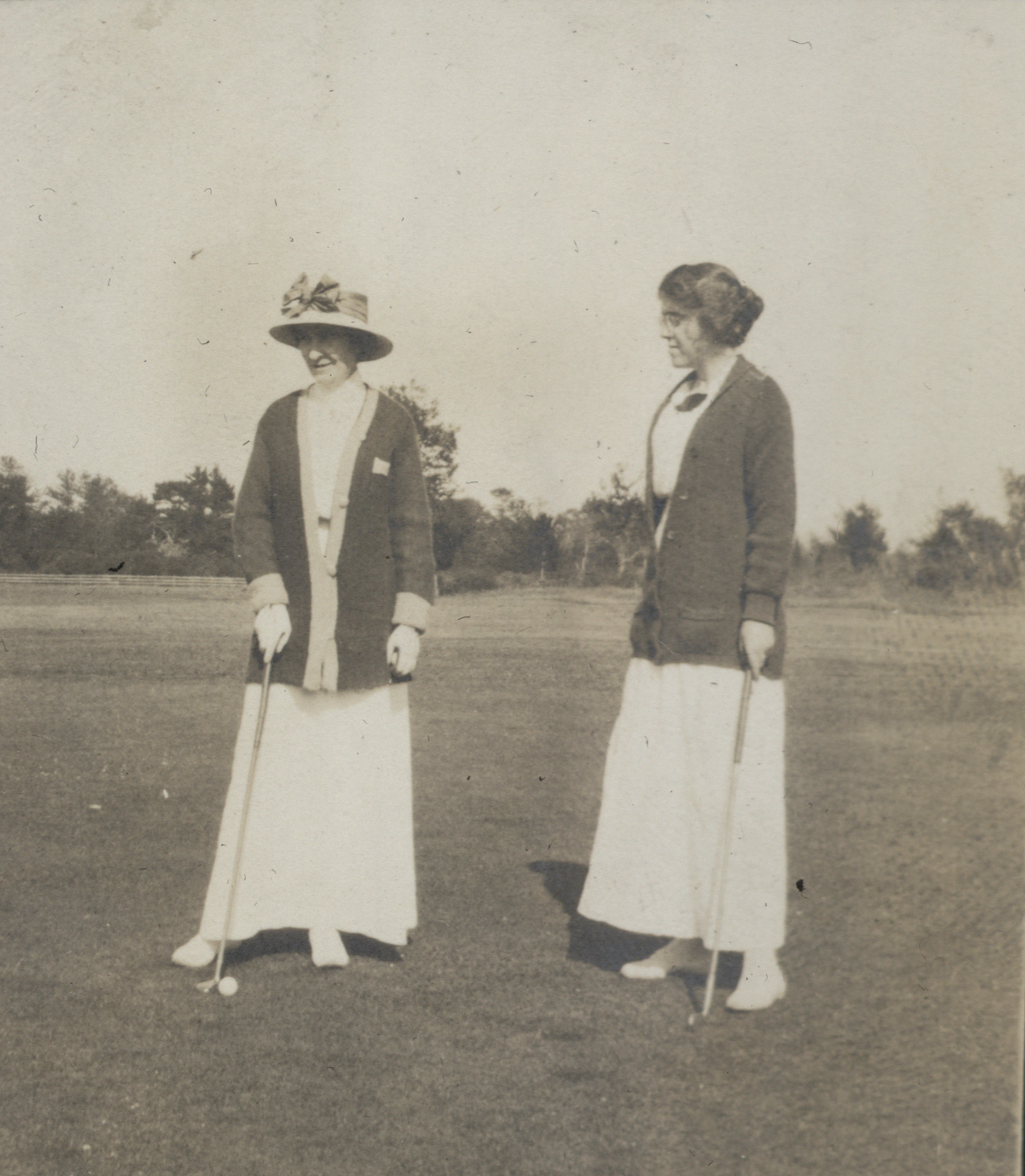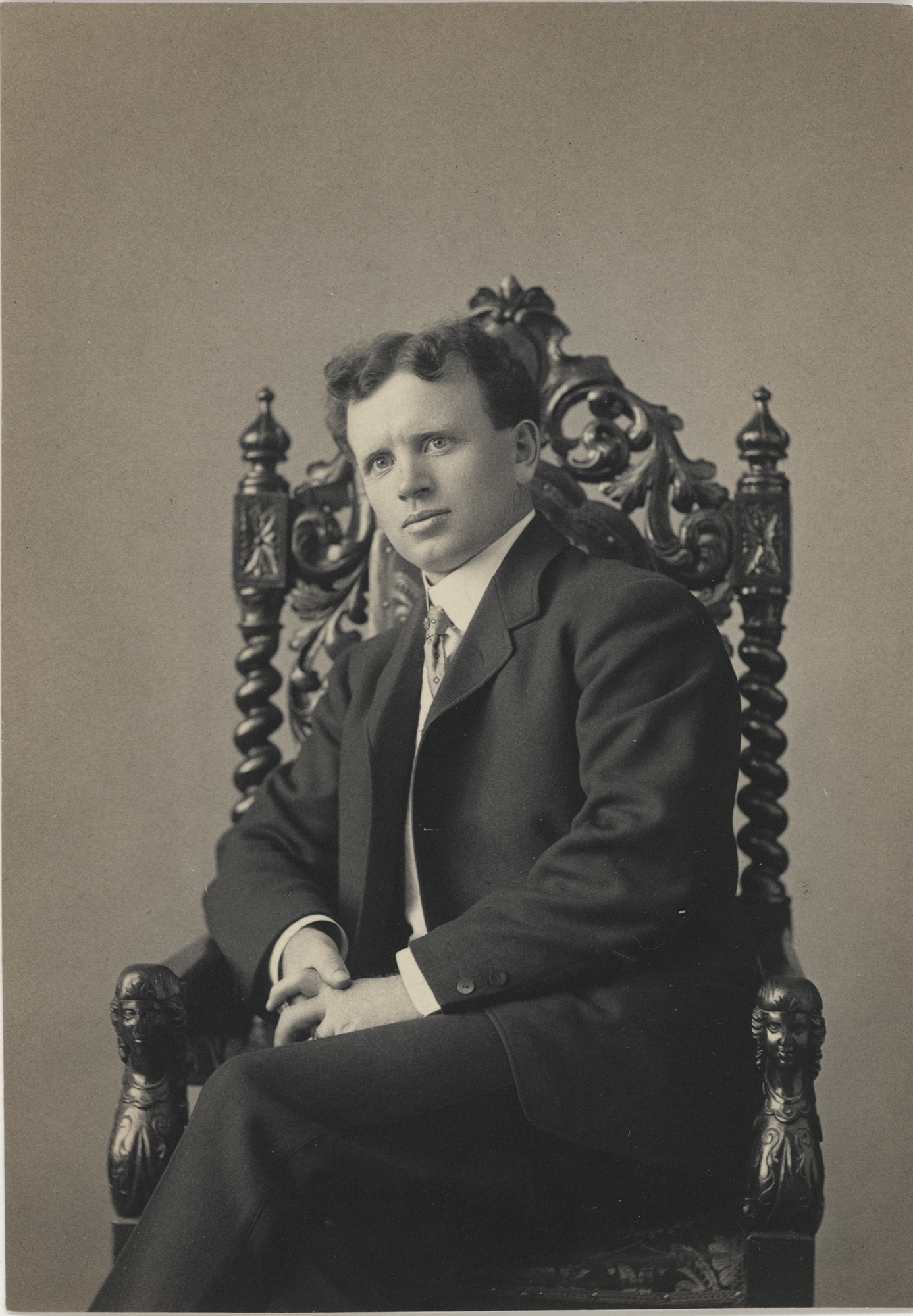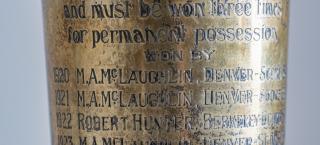
Story
Waiting for Someone to Listen
Rediscovering One of America's Great Golf Champions
An extraordinary journey of joy and determination, discovered beneath a few layers of tarnish.
Imagine hiding in a corner for decades waiting for someone to listen to your story.
You would never know it was there. Hidden in the back of a pantry, the basement door opened to poorly lit spiraling stairs. No one ever bothered to put up a handrail. For good reason, generations of children called it the “scary basement.”
Jane Mohan, the last of the original family, lived in the comfort and memories of a house that had been in my family for seventy years for as long as she could. Finally, she was too frail to stay. The family assembled. Sort it out. Pack it up.
To everyone’s relief, my brother Pat O’Neill and his wife Ann took on the scary basement. Unfinished cement walls, light bulbs hanging from thick, black wires, old trunks, papers and boxes. In the midst of the moving chaos, Ann brought a badly tarnished golf trophy upstairs with dust so thick it hung like tassels on a shawl.
Another golf trophy, another day. My grandfather, Louis O’Brien, caddied for Denver Post publisher Fredrick Bonfils in the early 1900s and went on to become one of the best amateur players in Denver. My other brother, Tim O’Neill, lives and breathes golf in Raleigh, North Carolina. Golf trophies decorated my childhood like lamps on a table. I set the trophy aside and kept working.
The trophy would have met the same box-it-up, put-it-in-storage fate as the other items but it was too big and heavy to fit in a box. My daughter Kerry looked at the sad metal object sitting on the counter and said, “Do you have to take that home? It’s gross.” My concern focused on safely shepherding delicate china and crystal into a storage unit, so I asked my husband Preston to clean the trophy when he got home.
The twenty-six-inch, heavily tarnished trophy sat on my dining room table interspersed with my grandson’s toys, an odd juxtaposition for a tired warrior. Slow, careful wipes of a polishing cloth revealed a story. First, an elegantly engraved Cypress tree surrounded by water and the name Pebble Beach emerged. Another wipe. A name appeared. Preston stepped away from the trophy the way you jump back when you cannot register what you are seeing. “You need to look at this,” he said.
A name was printed on the trophy’s base: M.A. MCLAUGHLIN.
Michael McLaughlin vaguely drifted through my childhood memories. I had heard stories about his wealth and saw remnants of his elegant lifestyle, but I never heard about golf. How did the coveted trophy travel from Pebble Beach and end up in the scary basement? I found the trophy in 2014, but the 2020 pandemic pushed me to write the story. A history sleuth by nature and occupation, I was finally on the case.
Driving a few days later, I was talking to Tim on the phone when I asked him and if he wanted anything from the house. “Nah.” he said. Then, he thought for a moment, “Maybe something small.” I told him I had found a golf trophy he might like. I would send a picture when I got home. Tim was having lunch with his North Carolina golf friends when the image came through. First a text or two. Then, the text messages picked up speed like a frantic telegraph operator pounding out SOS. “Please send the trophy,” Tim texted.
Winning at the fabled Pebble Beach Golf Links is a golfer’s dream. Renowned player Arnold Palmer never got a win at Pebble and legendary golfer Jack Nicklaus said that if he could play one more round, he would play it at Pebble. Eager to see the trophy, Tim and his golf buddies planned a celebration for its arrival and sent a personal message to me: “Thank you for not turning the trophy into a flower pot.”
Michael A. McLaughlin, known as Mac to his friends, was my great-great-uncle. Mac and his wife Ella were born around 1869, just after the Civil War ended. Mac was born in Iowa and Ella in Maryland. Their families met in Iowa and moved to Denver together around 1880. Both were children of immigrants fleeing the Great Irish Famine and first-generation Americans. Ella’s sister, Mariah Moffat Cronin, was my great-grandmother.
Looking back, Ella and Mac’s spirits have been tapping on my shoulder for a long time. Wondering if their childhood homes still stood, I Googled their old addresses. The little red marker on the map landed on top of where I work. A classroom on the Auraria Campus near downtown Denver now stands in the footprint of their former homes.
Cranking through years of historic Denver newspapers on microfiche, I slammed to a stop when something came across my eye. Mac was a baseball player too. The book Baseball in Denver describes Mac’s team, the Sanden Electric Baseball Club, as one of the top amateur teams in the country. Mac managed the team and played center field. Standing in the center of his team photo, Mac’s eyes are intense. His stance is cocky and confident with a charismatic air.
Ella carried a slight build on a five-foot frame. A picture of Ella, when she was about thirty years old, shows her walking in one direction when her head suddenly turns with a glare at the camera that seems to say, “Oh yeah, watch me.”—an observation that later became prophetic. When Mac and Ella married in 1892, they were a matched set: ambitious, tenacious, and determined.
Mac’s early life was hardscrabble. A railroad clerk at eleven, by age fifteen, Mac owned the McLaughlin Company and was an agent for Sanden Electric. Around 1899, the McLaughlin Company transformed into Dr. McLaughlin’s Electric Belt Company. Mac and Ella moved to San Francisco to promote the business. Within a few years, Dr. McLaughlin’s Electric Belt ran ads in fourteen US cities and three countries. The money rolled in.
You can take the boy out of baseball, but you can’t take baseball out of the boy. Mac’s playing days were over, but he still got a kick out of hitting things and seeing them fly. Golf piqued his interest so he found Scottish golf pro James Melville at the renowned Del Monte Hotel in Monterey and took lessons every day for a week.
Mac laughed when he later described his first encounter with golf for a Denver newspaper. Drawing on his natural athleticism and confidence, Mac entered a tournament the next week and was paired with an older man. Mac “chestily” teed up and the ball went everywhere. At the end of the day, the scores were tallied. Old Gentleman 129; Mac 139. Humbled by the experience, Mac said that if he had developed “any bump of conceit, it was taken out of him that day.”
Their passports arrived in 1903, setting them on course for extensive travel in Europe and a chance for Mac to burnish his reputation on the international golf circuit. Mac earned his golfing chops in Europe but his home remained the United States.

"A round of golf is a test of character. You know a man pretty well after 18 holes." from Ground Rules, page 35 of the Lakewood Country Club Handbook 1921.
Mac and others founded the Lakewood Country Club in Lakewood, Colorado in 1908. According to the Rocky Mountain News, “Mac was runner-up in more tournaments than any man in the West,” including the prestigious Trans-Mississippi Golf Tournament in 1914. Mac won the Colorado State Golf Championship in 1915 and 1916 and served as president and founding member of the Colorado Golf Association. Golf in Denver described Mac as a “colorful investment banker” who was one of the top amateur golfers in Colorado.
One particularly vivid memory is the story of when Mac and Ella adopted my two great-aunts. When my great-grandmother, Mariah Cronin, gave birth to the last of her eleven children, Ella took over the care of her sister’s baby as if she were her own. Mac and Ella formally adopted baby Alice and her older sister Anna in 1903. My grandmother, Frances Cronin O’Brien, was child number ten. As kids, we joked about missing the rich life by one birthplace. When Ella’s sister Frances Moffat moved in, Ella’s family was complete with two children and a live-in golf partner.
As Mac’s life came into focus, another surprising picture emerged. Ella was no shrinking violet. She was a fierce competitor. Mac, Ella, and her sister Frances Moffat were a golfing juggernaut whose stories dominated Denver newspapers during the 1910s. Ella and Frances helped to establish the Colorado Women’s Golf Association. The sisters competed against each other in tournaments. Ella won the first Colorado Women’s State Championship in 1916 and came back to win again in 1917. Frances won the championship in 1918. To round out the decade, Mac won the Colorado State Golf Tournament in 1919. Colorado State Championship trophies stayed in the McLaughlin family for five consecutive years. Still legendary in 1970, Ella’s early contributions to golf were highlighted in a Denver Post story. And, of course, the story commented on her stylish attire.
Meanwhile, a world-class golf course was under construction. Overlooking stunning views of the Pacific Ocean in Monterey, California, the new Pebble Beach Golf Links opened in 1919. The Gold Vase Tournament began a year later with an elaborate gold-plated trophy that would list the names of each year’s winner. Mac was going back to where golf had begun for him. And he was going to put his name on that trophy.
Winning was not easy. The 1920 tournament ended in a three-way tie between Mac, Kenneth Monteagle, and R. Walker Salisbury. Another eighteen-hole playoff match left Mac and Salisbury in a two-way tie. Mac finally took the tournament with a third eighteen-hole playoff win. News accounts highlighted well-known golf names but when Mac won the 1920 tournament, he was described as the “visitor from Colorado.” One win was not enough.
When Mac returned in 1921, press accounts described him as the most prominent player, along with a number of other well-known out-of-state-players. Mac started with a one handicap and defeated scratch player A.H. “Bunker” Vincent in the final match. A score of eighty gave Mac his second Gold Vase win. A few months later, Ella won the 1921 Colorado State Women’s Championship and reclaimed the title for a third time.
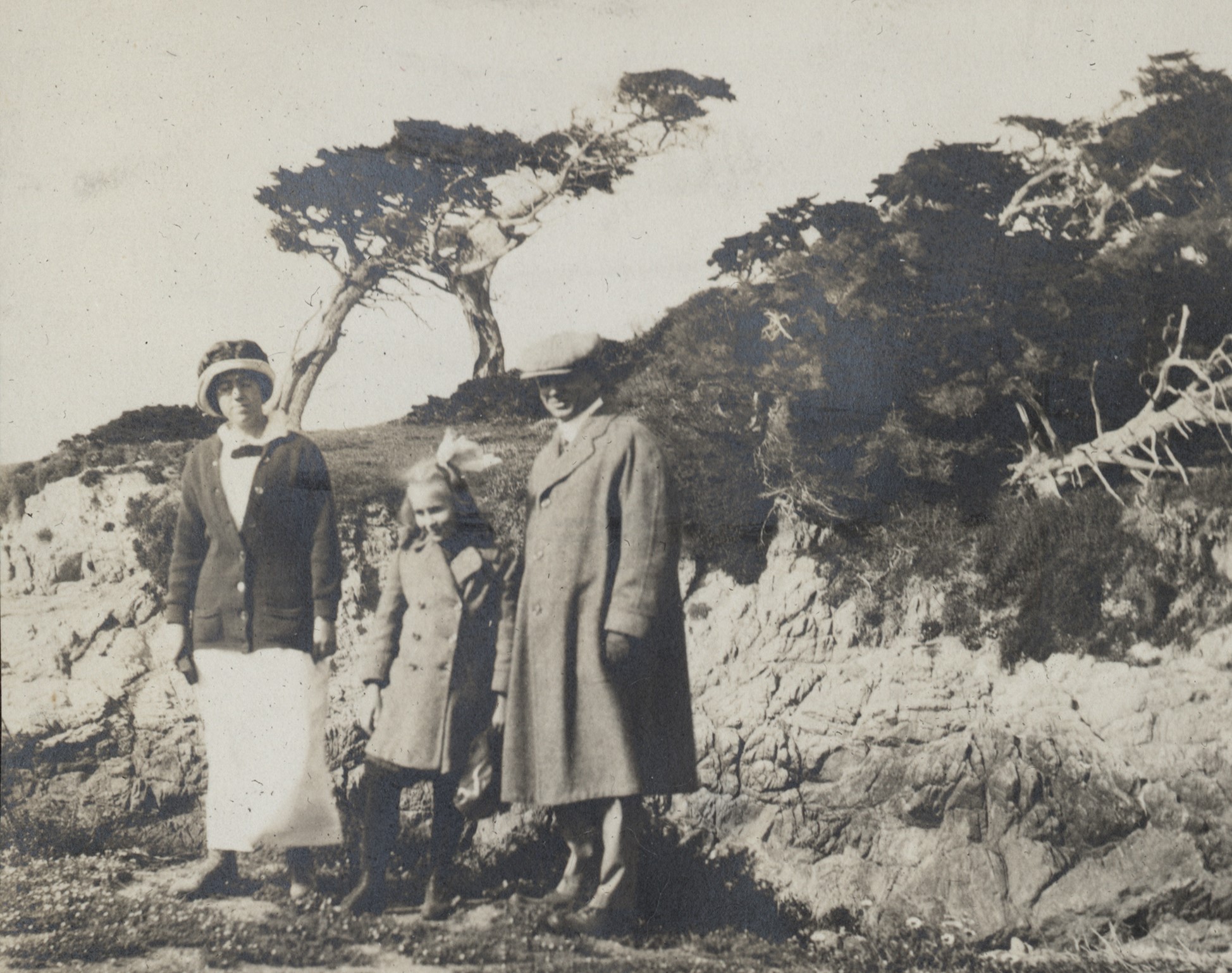
Mac with his two daughters, Anna (left), and Alice (middle) near the famous Cypress Tree at Pebble Beach.
With two tournament wins under his belt, the sparkling trophy was within reach. Wind, rain, and an unhealed arm injury dashed a third win in 1922. Mac placed second behind Robert Hunter.
Golf is an elusive game—players, courses, weather—they all change. Golf isn’t about chasing a little white ball, it’s about chasing that pinnacle moment when everything comes together. In 1923, a telegram arrived in early February at Pebble: the two-time champion was returning. Mac recalled that he had not been able to practice for three weeks prior to leaving Denver. Arriving just few days before the tournament, a San Francisco sportswriter characterized Mac’s preparation this way:
Nobody knows
Where Tosti goes
When Tosti says goodbye.
No one knew where Mac went to take lessons and polish up his game. But every year he came back better than ever.
With a four-stroke lead heading into the final hole, Mac had already closed out his opponents. Now, Mac was playing against himself—his emotions, his talent, his fallibility. A fifteen-foot putt headed toward a three-and-a-half-inch cup on February 22, 1923. A collective inhale and the ball rolled in. That old Pebble magic glittered down around Mac. At 54, M.A. McLaughlin was the first person to win three Pebble Beach tournaments. In a nod to the future, a young Pebble Beach caddy named Alfred Santos might have been watching Mac's game that day. In 2019, Santos' grandson, golfer Phil Mickelson, would overtake Mac's feat and win a record-setting fifth tournament at Pebble Beach.
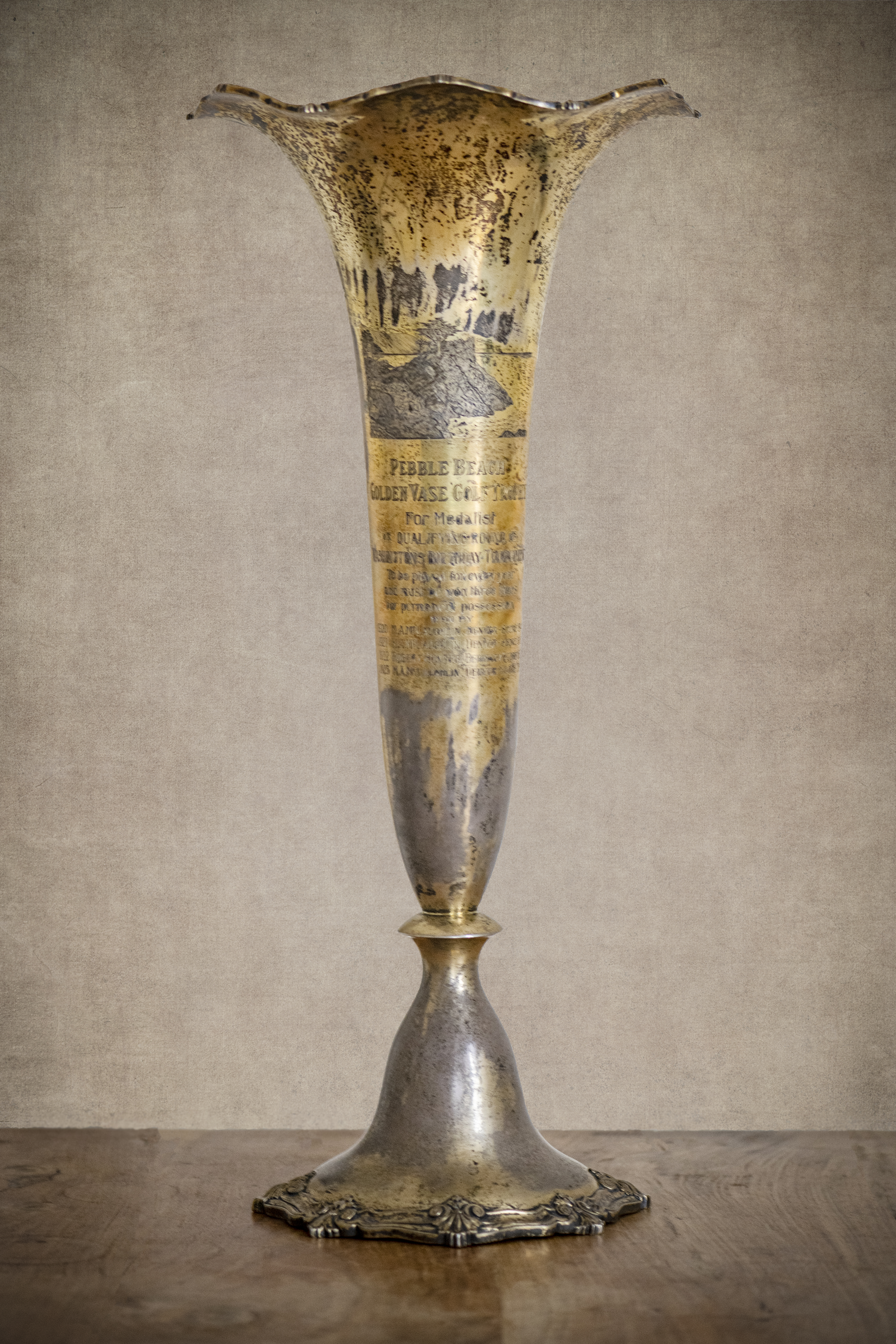
The Golden Vase Golf Trophy was designed to commemorate the first major tournament sponsored by the newly opened Pebble Beach Golf Links in 1920. Tournament organizers designed the trophy to resemble the prestigious Saint Andrews Golf Cup in Scotland.
Back in Denver, the local papers celebrated Mac’s victory. The Denver Post headline read, “Denver Man Wins Beautiful Trophy for Third Time and Is Bringing It Home; Colorado Gives Coast Laugh.” Tournament rules stated that only three-time winners took the big trophy home. Stunned by watching the elegant cup leave the state, especially with a no-name player, Pebble Beach commissioned a new trophy and changed the rules. No one took the trophy home again.
Mac and Ella lost their fortune around 1924, which explains why Mac never returned to defend his title. Still loving golf, Mac and Ella continued playing in regional tournaments throughout the 1920s. Mac founded the Colorado Senior Golf Association in 1935 and won the senior tournament in 1937.
As their lives wound down, Mac’s heart disease worsened and Ella developed cancer. They moved in with Ella’s sister, Bert Zook, in 1937. Worried about the state of his own health, Mac feared that Ella would outlive him.
“How I dread the feeling that she is praying that she will not leave me, because, in her unselfish love, she would protect me from grief,” Mac said. “If she is praying for that, and I am praying that I shall outlive her for the same reason, we are praying against each other.”
Michael McLaughlin died on August 2, 1938. Ella followed on November 2, 1939. The Denver Post headline read “Former State Champ Dies.” Mac’s picture still hangs on the wall at Lakewood Country Club. M.A. McLaughlin was posthumously inducted into the Colorado Golf Hall of Fame in 2003.
I asked Mac and Ella’s granddaughter, Jane, about her grandparents, who died when she was around eight. Reminiscing, she recalled Mac’s presence filling the room when he picked Jane and her sisters up for a party. Jane lived in the house for seventy years but she never saw the trophy.
Appraised at $75,000, the trophy’s value extends beyond recognizing Mac’s achievement. The trophy connects us to history and symbolizes the contributions golf has made in the United States and around the world. In all, I have found six trophies: the large Gold Vase and the three small replicas; the 1915 Men’s Colorado State Championship trophy; and one seven-inch gold plated trophy without engraving. I dubbed the unadorned trophy “The Spirit of Ella”—fearless entrepreneur, championship golfer, a woman ahead of her time.
Sitting quietly in a basement corner for seventy years, the Pebble Beach Gold Vase trophy kept the remarkable story of Michael and Ella McLaughlin alive. Patiently waiting for someone to listen.
For Further Reading
DiGiacomo, Alisa. “Left on the Field: Colorado’s Semi-Pro and Amateur Baseball Teams.” Colorado Heritage, Summer Issue, 2018.
Hotelling, Neal. Pebble Beach: The Official Golf History. Triumph Books, 2009. Additionally, please see the Pebble Beach Golf Course Timeline.
“M.A. McLaughlin: 2003 Colorado Golf Hall of Fame Inductee.” Colorado Golf Hall of Fame.
Mohr, Rob; Krupa, Leslie Mohr. Golf in Denver. 1st ed. Arcadia Publishing, 2011.
Rocky Mountain News writer N.C. Morris wrote several articles about the McLaughlins between the years of 1918 and 1927, including “M’Laughlin Is Great Player: Forsook Baseball to Become a Star on Links in This Region,” (December 13, 1927). Articles by various journalists featuring the McLaughlins also appeared in The Denver Post during this time.
With special thanks to Jay Sanford, who has been wonderful helping me research Mac’s baseball days.
More from The Colorado Magazine
Creede and World War I—A Knitter’s Tale It was the summer of 2000 and eleven-year-old Lizzie, a beginning knitter, hoped she’d found a mentor—her ninety-four-year-old grandmother, Mary Elting Folsom. Lizzie’s question took Mary back to 1917, several months after the US entered World War I.
The First Draft: Colorado History Over a Few Beers Coloradans love our local beer. The first locally brewed keg was tapped in Denver to rave reviews from residents at the end of 1859. Today more than 360 breweries throughout the state—encompassing both the world’s largest beermaking plant and the smallest nano-operations—pour locally made libations for appreciative patrons.
Hindsight 20/20 The Colorado Magazine asked twenty of today's most insightful historians and thought leaders to share their visions of how 2020 will go down in history.

